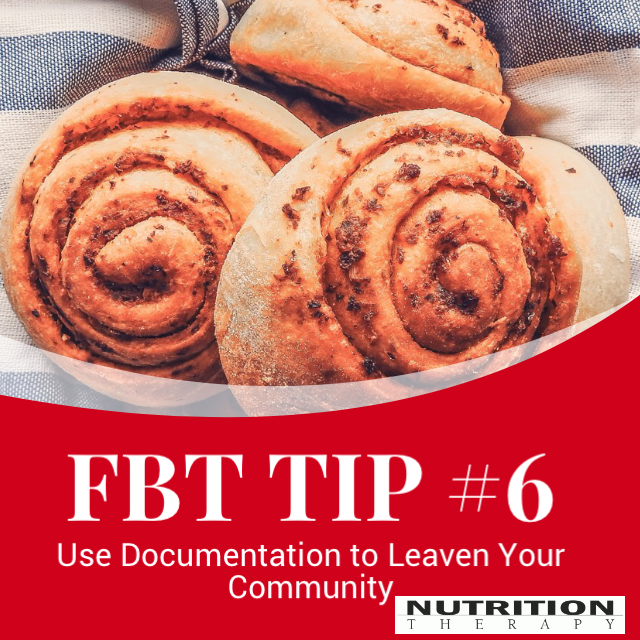BLOG
|
Most RDNs are very familiar with how leavening agents work in baking. I would like to use this analogy to describe how writing and sending reports to your treatment team can leaven your professional community.
Definition Leaven: it’s an element that produces an altering or transforming influence. Dietitians who follow evidence-based approaches when treating adolescents with eating disorders and use documentation effectively will produce a transforming influence in their community. Your community includes: physicians, nurse practitioners, pediatricians, therapist, and psychiatrist. Documentation will leaven your community and spread a clear understanding about eating disorders and family-based treatment (FBT). As clearly stated in the newly revised The CEDRD in Eating Disorder Care booklet: “RDs often act as case managers in the outpatient setting as medical practitioners and psychologists increasingly find they do not have time to do this critical aspect of care. Case management involves making sure that all members of the outpatient team have frequent communication and agree to treatment details.” Your treatment team will be transformed in a number of ways:
I have been an RDN for too many years to mention. Actually, I learned the ADIME (Assessment, Diagnosis, Impression, Monitoring and Evaluation) documentation system from my interns and students. I felt that the use of a PES (problem, etiology symptoms) statement was a wonderful way to articulate a clear picture of the patient. I always add my impression and expand my PES statement to allow for more understanding and education. Documentation will leaven your community and spread a clear understanding about eating disorders and family-based treatment (FBT). It starts with sending that fax and then established the best way to communicate after that. If you are interested in sharing a sample of the documentation that I use please contact me today.
1 Comment
|
AuthorMelanie Jacob RDN is a seasoned eating disorder professional that found her niche in treating adolescents with eating disorders. When the FBT research surfaced in 2006 she transitioned her approach to follow the evidence. Archives
September 2018
Categories
All
|
Proudly powered by Weebly

 RSS Feed
RSS Feed